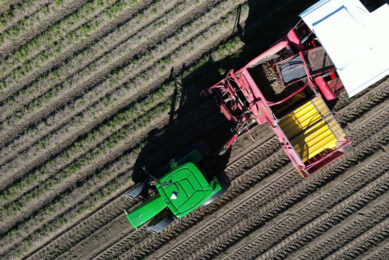Agriculture sets sights on space technologies

According to a new report by AgriFutures Australia, agriculture is the next frontier for space tech, with billion-dollar opportunities to super-charge technology adoption for farmers, fishers and foresters over the next five to ten years.
The AgriFutures Australia report was commissioned to give producers awareness of the depth and breadth of available space technologies, the potential uses and insights into what is coming over the next decade.
Gelocation and satellite connectivity
The Australian National University (ANU) study, Space-based technologies – opportunities for the rural sector, found that improvements to geolocation alone could benefit Australian agriculture by $ 2.2 billion over a 30-year period, and satellite connectivity can add $ 15.6 billion to gross value of production across agriculture, fisheries and forestry industries each year.
According to AgriFutures Australia, space technologies are already making their mark. These technologies are satellite imaging, low bandwidth sensors, GPS tracking, autosteer, paddock level imagery and weather forecasting.
AgriFutures Australia Senior Manager, Rural Futures, Jennifer Medway said space has traditionally been the realm of sectors like mining and defence and we are only on the cusp of unlocking opportunities for the rural sector.
The farmer of the future will have space technology fully integrated into their everyday production systems and decision making
“It’s exciting. The farmer of the future will have space technology fully integrated into their everyday production systems and decision making. For instance, dashboards will enable farmers to remotely manage manual processes, and interoperable data systems will radically shift the way on-farm decisions are made. All this is made possible through space technology, which has the potential to revolutionise the working day of tomorrow’s farmers,” Ms Medway said.
Text continues underneath image
evokeAG
Initiatives such as AgriFutures’ evokeAG is connecting farmers, tech developers, researchers and even the Australian Space Agency, to accelerate the development of space technologies for agriculture, and in turn, introducing new ways of doing things.
The SmartSat Cooperative Research Centre is investing in a $ 245 million research program in advanced telecommunications, intelligent satellite systems, Earth observation and remote sensing analytics. The Australian Space Agency has a mandate to triple the size of the domestic space industry by 2030.
“Agriculture’s time is now. To stay competitive and continue to up the ante on increasing productivity and sustainability, we need to look to fixes ‘outside the square’. Space technology is one of those fixes,” Ms Medway said.
Practical and cost effective solutions key to adoption
Centre for Entrepreneurial Agri-Technology, Industry Engagement Senior Manager, Martin Amidy said a scenario whereby a farmer can manage multiple tasks in real time at the click of a button is now a reality. Though practical and cost effective solutions will be key to adoption.
“In addition to the report, easily digestible fact sheets summarise available space technologies and their impact for livestock farming and broadacre cropping, to fishing and forestry, as well as more intensive farming systems like horticulture and dairy.”
“It is important to emphasise the opportunity space technology presents, but it is equally important to arm producers with practical information on how to implement it and the return on investment they can get from adopting these technologies,” Mr Amidy said.
Remote sensing, connectivity and geolocation
The report shares insights into what is happening on a global scale and consolidates the technologies and applications suitable for the Australian context, focusing on three main components that can address challenges in rural industries: remote sensing, connectivity and geolocation, as well as the barriers to adoption.
Ms Medway explained the next steps involve rural industries and tech companies collaborating to help each other understand the complexities of the market to maximise space-tech opportunities.
“The space landscape is fast paced. Space companies and tech developers are in our sights and we need further discussions to explore how technology can be applied to solve agricultural challenges,” said Ms Medway.
Join 17,000+ subscribers
Subscribe to our newsletter to stay updated about all the need-to-know content in the agricultural sector, two times a week.



